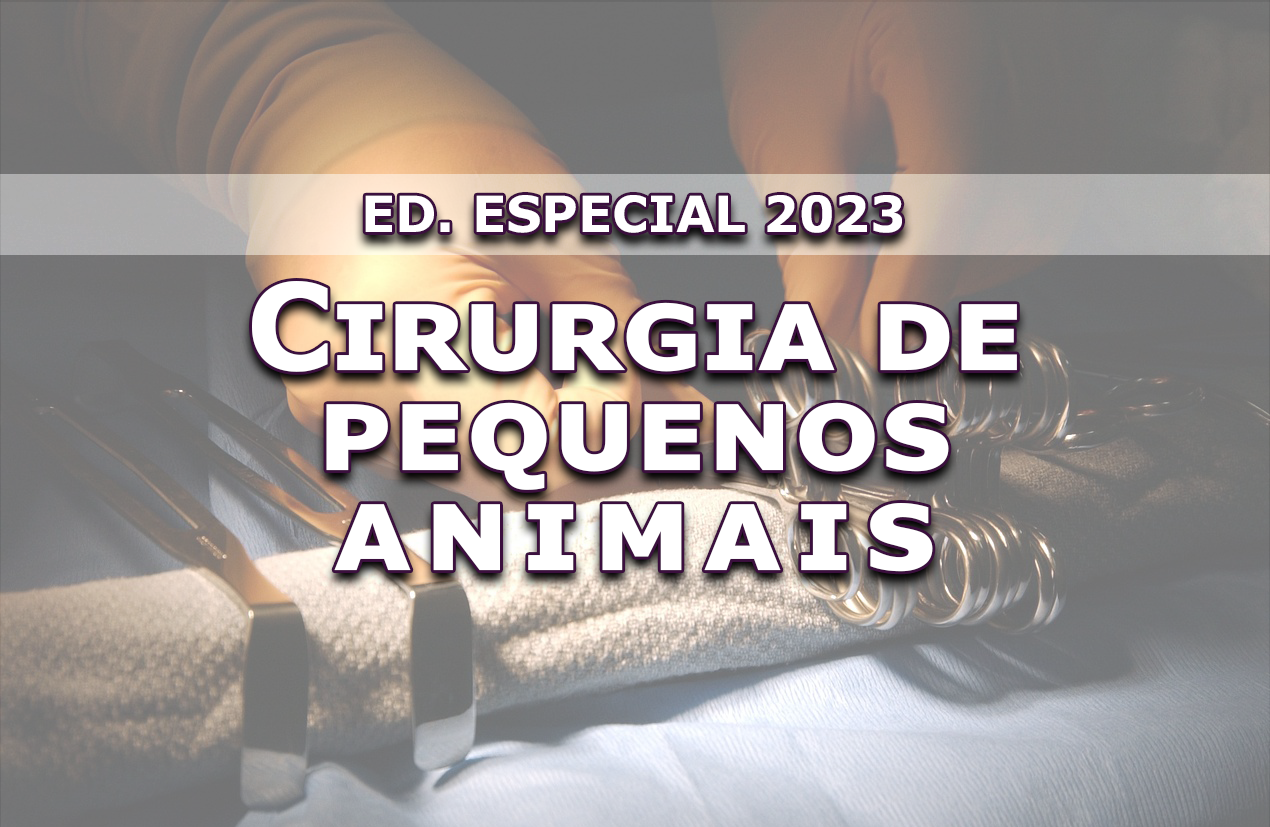Utilização do retalho de padrão subdérmico inguinal bilateral e da tela de polipropileno após ressecção de neoplasma mamário: Relato de caso
DOI:
https://doi.org/10.31533/pubvet.v17n13e1503Keywords:
Cirurgia reconstrutiva, felino, neoplasiaAbstract
The use of reconstructive surgery techniques is increasingly common in veterinary medicine for the tissue reconstruction of wounds, whether due to trauma or tumor excision, improving functionality and maintaining pleasant aesthetics. The choice of technique to be used depends on the location of the wound, size, tension lines, skin availability and the surgeon's experience regarding the technique to be used. These procedures require a broad vascular anatomical knowledge from the surgeon, in order to achieve the success of the surgical technique, avoiding possible postoperative complications. The present work aims to evaluate the use of the bilateral inguinal subdermal pattern flap and the polypropylene mesh after resection of a mammary neoplasm in a cat, SRD, 15 years old, spayed and with a history of tumor recurrence. As postoperative complications there was only the formation of a small amount of inflammatory liquid, however the applied technique obtained a positive result in the repair of an extensive surgically created cutaneous defect.References
Aiken, S. W. (2003). Principles of surgery for the cancer patient. Clinical Techniques in Small Animal Practice, 18(2), 75–81. https://doi.org/10.1053/svms.2003.36619.
Balbino, C. A., Pereira, L. M., & Curi, R. (2005). Mecanismos envolvidos na cicatrização: uma revisão. Revista Brasileira de Ciências Farmacêuticas, 41(1), 27–51. https://doi.org/10.1590/s1516-93322005000100004
Blackwood, L. (2008). Approach to the cancer case: Staging–how and why [versão eletrônica]. 33rd Congress of the World Small Animal Veterinary Association, Dublin, Ireland, 20–24.
Campos, A. C. L., Borges-Branco, A., & Groth, A. K. (2007). Cicatrização de feridas. Arquivos Brasileiros de Cirurgia Digestiva, 20, 51–58. https://doi.org/10.1590/S0102-67202007000100010.
Castro, J. L. C., Huppes, R. R., De Nardi, A. B., & Pazzini, J. M. (2015). Princípios e técnicas de cirurgias reconstrutivas da pele de cães e gatos (atlas colorido). In Medvep (Vol. 1). MED VET Livros.
Coltro, P. S., Ferreira, M. C., Batista, B. P. S. N., Nakamoto, H. A., Milcheski, D. A., & Tuma Júnior, P. (2011). Atuação da cirurgia plástica no tratamento de feridas complexas. Revista do Colégio Brasileiro de Cirurgiões, 38(6), 381–386. https://doi.org/10.1590/s0100-69912011000600003.
Daleck, C. R., Fonseca, C. S., & Canola, J. C. (2016). Oncologia em cães e gatos. Roca.
Fossum, T. W. (2021). Cirurgia de pequenos animais (3ed.). Elsevier Editora.
Hunt, G. B., Tisdall, P. L. C., Liptak, J. M., Beck, J. A., Swinney, G. R., & Malik, R. (2001). Skin‐fold advancement flaps for closing large proximal limb and trunk defects in dogs and cats. Veterinary Surgery, 30(5), 440–448. https://doi.org/10.1053/jvet.2001.25868.
Kuroi, K., Shimozuma, K., Taguchi, T., Imai, H., Yamashiro, H., Ohsumi, S., & Saito, S. (2006). Evidence-based risk factors for seroma formation in breast surgery. Japanese Journal of Clinical Oncology, 36(4), 197–206. https://doi.org/10.1093/jjco/hyl019.
MacPhail, C. M. (2014). Cirurgia do sistema tegumentar. In Fossum, T. W. (2021). Cirurgia de pequenos animais. Elsevier Rio de Janeiro.
Pargana, A. M. (2009). Técnicas reconstrutivas em cirurgia oncológica de canídeos e felídeos. Universidade Técnica de Lisboa.
Pavletic, M. M. (2018). Atlas of small animal wound management and reconstructive surgery (Wiley-Blackwell, Ed.). John Wiley & Sons.
Seretis, K., Goulis, D., Demiri, E. C., & Lykoudis, E. G. (2017). Prevention of seroma formation following abdominoplasty: a systematic review and meta-analysis. Aesthetic Surgery Journal, 37(3), 316–323. https://doi.org/10.1093/asj/sjw192.
Shaver, S. L., Hunt, G. B., & Kidd, S. W. (2014). Evaluation of fluid production and seroma formation after placement of closed suction drains in clean subcutaneous surgical wounds of dogs: 77 cases (2005–2012). Journal of the American Veterinary Medical Association, 245(2), 211–215. https://doi.org/10.2460/javma.245.2.211.
Silva, C. R. N. (2003). Mastectomia. In G. A. Mazzotti & M. R. Roza (Eds.), Medicina felina essential: guia prático. Livros de Veterinárias.
Withrow, S. J., Page, R., & Vail, D. M. (2020). Small animal clinical oncology. Elsevier Health Sciences. https://doi.org/10.1201/9781315381855.
Downloads
Published
Issue
Section
License
Copyright (c) 2023 Kamila Cristina Martins da Silva, Victoria Rabelo Vieira Assad Martins, Vitor Pereira Nascimento, Robertson Bastos Rodrigues, Jenifer Oliveira dos Santos, Matheus Costa Madeira, Thiago Martins Souza, Thaís Bastos Rocha Serra, Rudson Almeida de Oliveira, Nathálya dos Santos Martins

This work is licensed under a Creative Commons Attribution 4.0 International License.
Você tem o direito de:
Compartilhar — copiar e redistribuir o material em qualquer suporte ou formato
Adaptar — remixar, transformar, e criar a partir do material para qualquer fim, mesmo que comercial.
O licenciante não pode revogar estes direitos desde que você respeite os termos da licença. De acordo com os termos seguintes:
Atribuição
— Você deve dar o crédito apropriado, prover um link para a licença e indicar se mudanças foram feitas. Você deve fazê-lo em qualquer circunstância razoável, mas de nenhuma maneira que sugira que o licenciante apoia você ou o seu uso. Sem restrições adicionais
— Você não pode aplicar termos jurídicos ou medidas de caráter tecnológico que restrinjam legalmente outros de fazerem algo que a licença permita.





